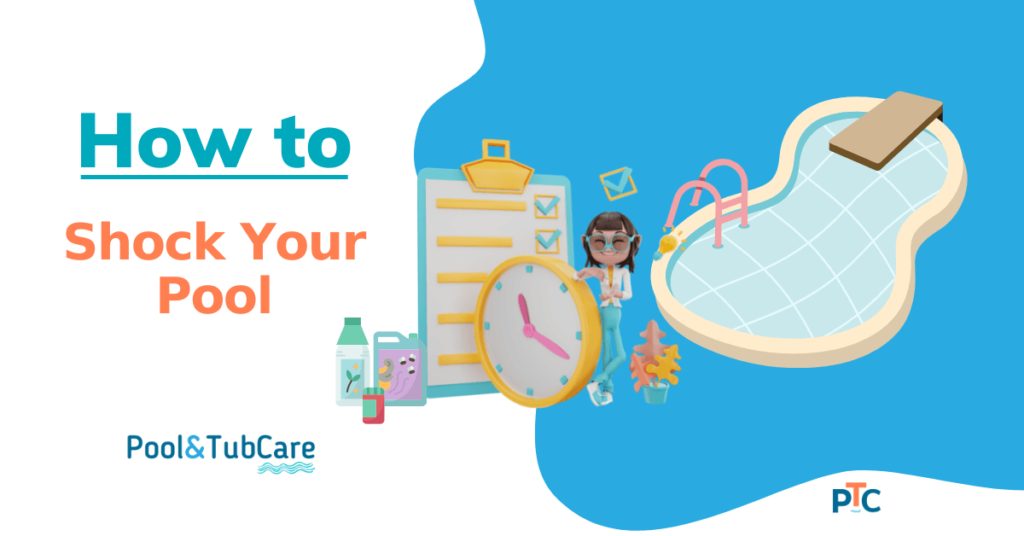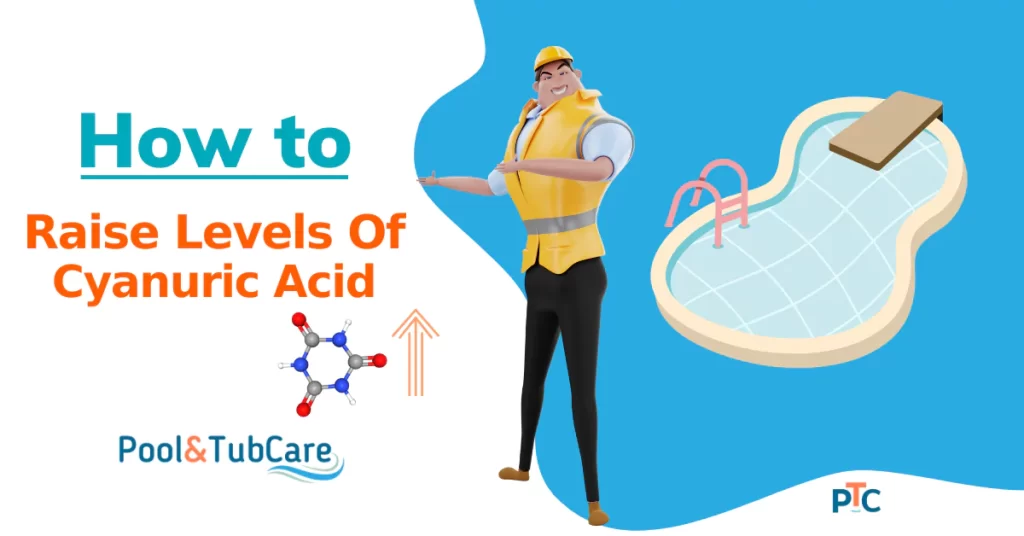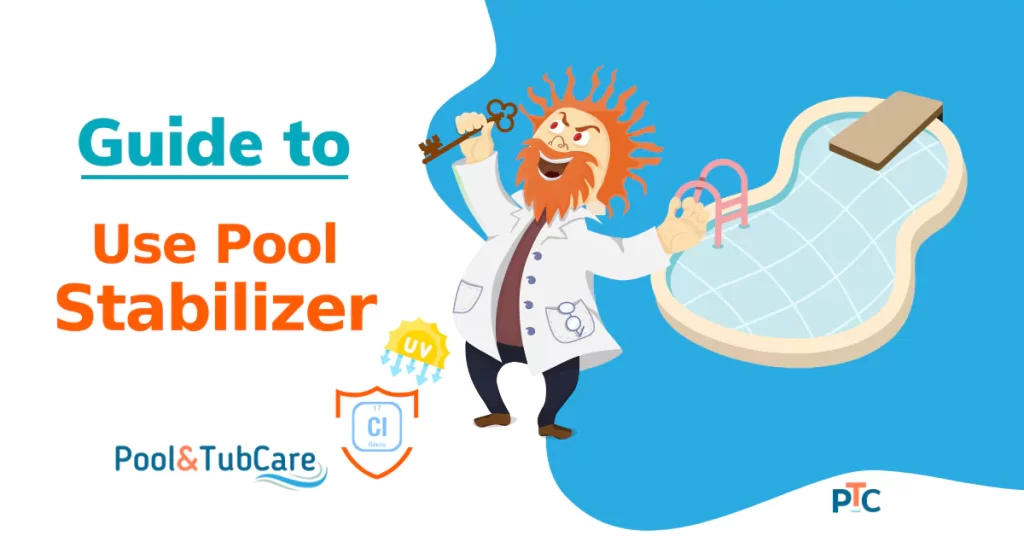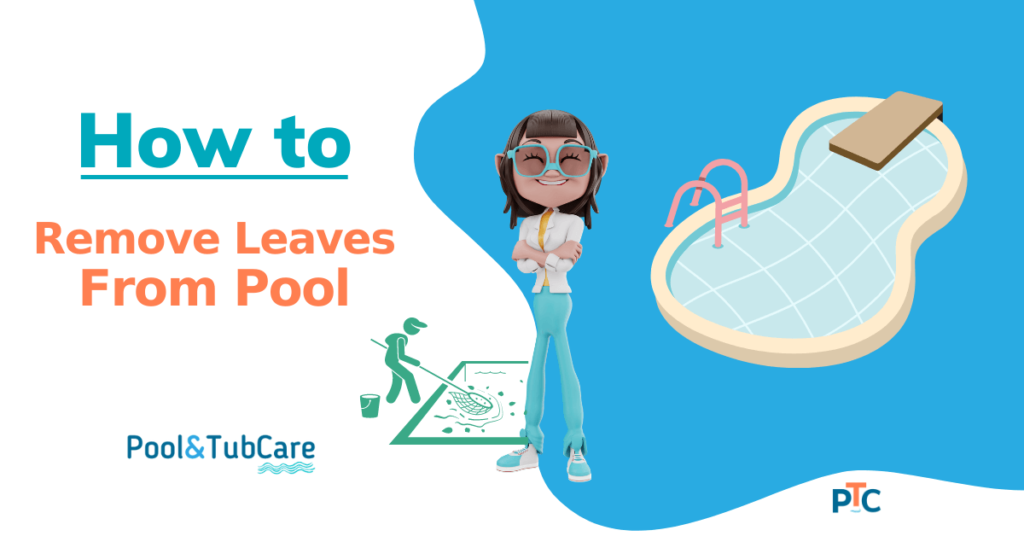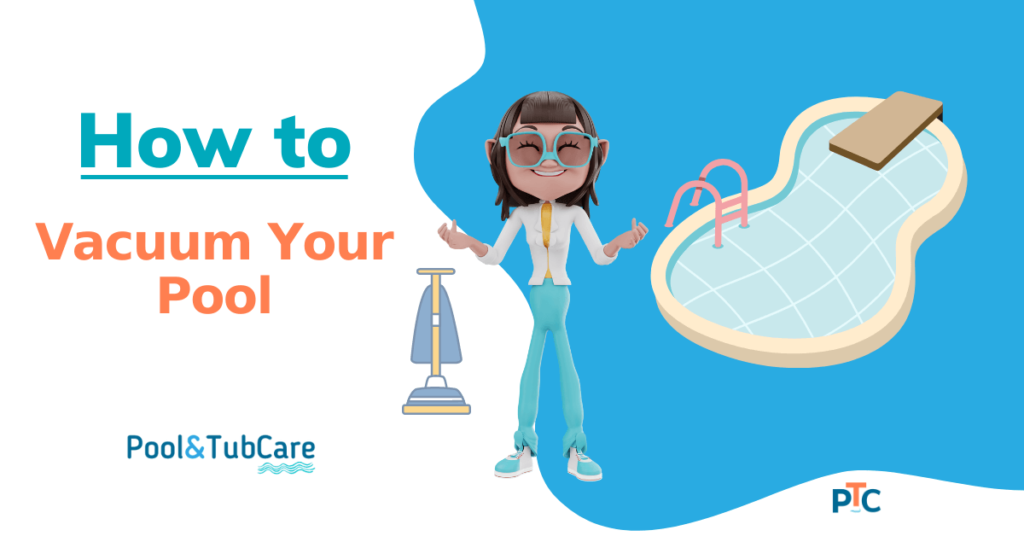If your pool is looking a little lackluster, it may be time to give it a good shock (not the literal one). It’s not as difficult as you think to shock your pool to restore its clarity and sparkle.
Shocking the pool helps to bring free chlorine levels to normal, and it keeps algae and bacteria away from the water.
Shocking your pool regularly will allow you to feel the joys of swimming in crystal clear pool water, so it’s important to learn how to shock your pool if you are a pool owner.
In this article, I will show you how to shock your pool in the right way.
What does Shocking a Pool Mean
Shocking a pool involves temporarily increasing the free chlorine levels in your water to extremely high levels. This process is often referred to as super chlorination or hyperchlorination.
Over time, chlorine breaks into chloramines, which causes the pool’s odor.
If your pool smells odd, it indicates it requires your attention. When you shock your pool, the high chlorine levels break down the chloramines and eliminate the odor.
Pool shock will also help eliminate algae growth, cloudy water, and other water quality issues.
How the Shock Works
Before you begin shocking your pool, you must first understand the basics behind it. You are flooding your pool with more chlorine while shocking. But why?
To understand this, you must first know that chlorine has different forms.
- Free chlorine: This is the type of chlorine that works to keep your pool clean. Your pool needs at least 1-3 ppm free chlorine for it to be effective.
- Combined chlorine: This is a kind of chlorine that has already been used and no longer sanitizes your pool. When free chlorine reacts with sweat, oils, and other impurities in the water, it turns into combined chlorine (chloramine).
- Total chlorine: This is the amount of chlorine after adding both free and combined chlorine in your water. Ideally, you want a higher concentration of free chlorine in your pool. However, the levels will begin to flip over time, and that is when you must take action.
Shocking your pool simply means increasing the amount of free chlorine in your water to the point where it quickly breaks down the combined chlorine (chloramine), restoring equilibrium.
The breakpoint chlorination is the point at which chloramines break down.
To attain breakpoint chlorination, the free chlorine levels must be ten times higher than the combined chlorine levels. If the breakpoint level is not reached, you may increase the problem and levels of chloramines.
For example, if the combined chlorine level is 0.5 ppm, the free chlorine level must be increased to 5 ppm to achieve breakpoint chlorination.
How Often and When to Shock Your Pool
If many swimmers use your pool regularly, you should shock it at least once a week, preferably after every pool party.
If you’ve noticed any of the following things, it’s time to shock your pool:
- Algae blooms
- Cloudy water
- Bad odors
- Water level change
- High levels of chloramines
- Severe rainstorm
- Spillage
- Human waste
You should shock your pool more often if you regularly use it. However, shocking it once every two weeks or so should be enough if you just use it occasionally.
If you have severe algae problems, you may need to shock your pool several times.
Note: Shock your pool in the evening when the sun is down to avoid UV rays harming the chlorine and making the shock less effective.
In the evening, add the shocking chemicals and run the pump for at least 8 hours to allow the shock to mix in the water thoroughly.
Different Types of Pool Shocks
There are different types of pool shocks on the market, each with its own advantages and limitations.
The two most common types of shocks are chlorine and non-chlorine.
1. Calcium Hypochlorite Shock
This is a chlorine-based shock that contains around 70% chlorine. It is very cheap and comes in the form of granules or powder.
That is the reason it is used by most pool owners. On top of that, it is very fast acting and effective at doing its job.
You need to pre-dissolve this shock before adding it to the pool, as it is very hard to dissolve. If you add it directly to the pool, it may not get dissolved uniformly and can create pockets of high chlorine leading to damage to surfaces.
You must be careful not to add too much at once since this might harm your pool’s liner. It also increases the calcium level in the water, so if your pool has calcium hardness, try to look for other ways to shock your pool.
2. Lithium Hypochlorite Shock
Lithium hypochlorite is another chlorine-based (35%) shock that is available in powder or granular form.
Although it costs a little more than calcium hypochlorite, it dissolves much easier, and you don’t have to dissolve it before adding it to the pool.
Lithium is the best choice for shocking your pool to prevent an algal bloom because it is toxic to algae.
It will take a few hours before you start seeing results from this form of shock because it doesn’t operate as soon as calcium hypochlorite.
3. Sodium Dichloro-S-Triazinetrione Shock
This shock is considered one of the best and most effective because it is 60% chlorine-based and dissolves fast. It is also known as “Dichlor.” It is a very potent oxidizer that will take care of organic pollutants from your pool’s water.
Be sure to thoroughly read and follow the instructions on the packaging before using this type of shock. Dichlor overdosing in your pool might be harmful.
You can add it immediately to the water; there is no need to dissolve it first.
It can also be used for saltwater pools.
It is stabilized and contains cyanuric acid and should not be used if you already have high CYA.
4. Potassium Peroxymonosulfate Shock
This shock is a non-chlorine shock and is also called “ShockOx.”
It works by oxidizing the water and breaking down organic pollutants in water.
This chemical is highly effective and keeps the chlorine levels in your pool from rising.
It was a little more expensive than shocks made of chlorine, but there is not much difference now.
Using it around swimmers and pets is also safe. This is the better option if you want to use your pool immediately after the shock.
This is recommended as a weekly shock for well-maintained pools.
Although it is suggested for shocking saltwater pools, you cannot use it as an algaecide because it is not Chlorine based.
5. Sodium Bromide Shock
Another non-chlorine shock, also known as “Bromine shock.”
You add bromide to the pool, and it changes into bromine which oxidizes the organic waste in the pool.
The advantage of using sodium bromide is that it keeps the chlorine level in the water more stable than other types of shocks.
The drawback of sodium bromide is that it is more expensive and challenging to find than chlorine. Bromine can also cause skin and eye irritation in some individuals.
Follow the directions on the packaging to shock your pool with sodium bromide.
How to Shock Your pool
Shocking your pool may appear to be a complex process, but it becomes an easy activity/routine when done regularly.
Supplies you need for Shocking your pool:
- Protective gear (glasses, gloves, work clothing, etc.)
- Shock (calcium hypochlorite or other)
- Testing kit
- Bucket
- Stick to dissolve it
The following process is simple and applicable to all kinds of pools.
1. Calculate Pool Water Volume
The first step is to determine your pool’s capacity (volume). This will help you figure out how much shock you need to add.
To determine the volume of a rectangular pool, use this formula: length x width x depth x 7.5 = pool volume in gallons.
For a pool of 20 feet long, 10 feet wide, and 5 feet deep, the capacity is calculated as 20 x 10 x 5 x 7.5 = 7,500 gallons.
If you have a circular pool, you may use this formula: Pool capacity in gallons = 3.14 x (radius*radius) x depth x 7.5.
A pool with a radius of 6 feet and a depth of 5 feet has a volume of 3.14 x (6*6) x 5 x 7.5 = 4239 gallons.
Use this calculator to find out the volume.
2. Testing of Pool Water
The next step is to test the water in your pool.
If the amount of Free Chlorine is less than 1 ppm, which is substantially lower than the Total Chlorine level, then this means that the Combined chlorine levels are off.
It’s then time to shock your pool.
Related: Ideal chlorine levels for pool water!
pH, alkalinity, and calcium hardness must all be tested.
pH: Pool pH should be between 7.2 and 7.6. Pool surfaces and equipment might corrode if the pH is too low, and skin and eye discomfort might occur if the pH is too high.
Alkalinity: For pools, the recommended alkalinity range is 80 to 120 ppm. Alkalinity aids in pH stabilization.
Calcium hardness: The recommended calcium hardness range is 175 to 225 ppm for pools. Too much calcium in pool water can cause deposits on pool surfaces, and corrosion can occur when there is inadequate calcium.
3. Add the Right Amount of Shock
The next step after finding the pool volume is to calculate the amount of shock chemical you need to add.
Most chemicals come with a chart and other instructions for adding the shocking chemical.
Generally, half a pound of shock is required for every 10,000 gallons of water if the pool capacity is less than 5000 gallons.
For pools with a capacity of 10,000 gallons or higher, 2 pounds of shock are required for every 10,000 gallons of water.
In cases of severe algal bloom, a larger shock dosage may be required.
Note: You should never add more than 1/2 pound of shock per 1,000 gallons of pool water at a time.
4. Dissolve the Shock in a Bucket of Water
Once you’ve calculated how much shock you need, dissolve it in a bucket of water.
Fill the 5-gallon bucket approximately halfway and add the chemicals to the water, not the other way around.
Stir the bucket until all of the shock has dissolved. The solution should then be poured into the pool on the sides.
Even in the cold, you must mix the shock in warm water before adding it to the pool water.
Note: Never breathe in the chemical directly, as it might irritate the lungs.
5. Circulate the Pool Water
You will need to circulate the pool water while shocking it.
Start the pump ahead of time and keep it going while shocking to ensure that the shock reaches every corner of the pool. Running the filter for at least 8 hours is the best way to do this.
If you have a saltwater pool, the water must be circulated for 12 hours.
6. Add the Shock
Dissolve the shock chemical in the water in the pool’s corners.
If the shock is to be added directly without dissolving, add one bag at a time till you reach your estimated breakpoint.
Only use your pool when the shock has worn off unless it is a non-chlorine shock and you’ve followed the manufacturer’s instructions.
Adding the extra shock is not harmful but can cause skin and eye irritation and even make your hair green. There is also the chance of bleaching your swimwear.
7. Test the Pool Water Again
You will need to test the pool water chemistry again once it has been circulated.
pH, alkalinity, and calcium hardness should all be tested.
You must also test for both combined and free chlorine.
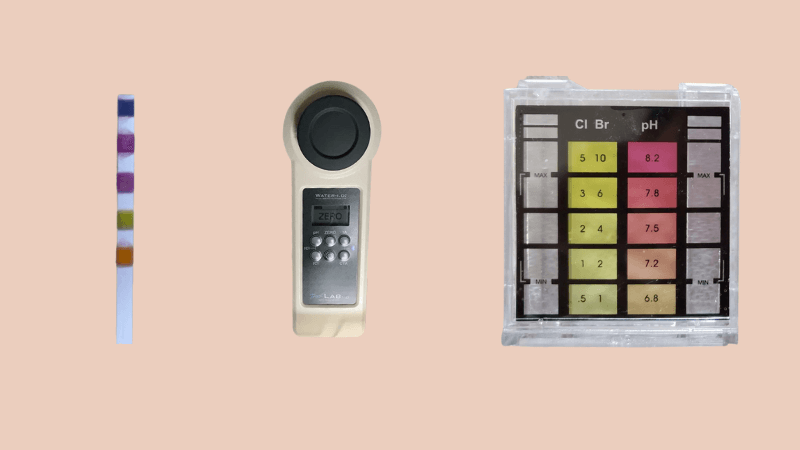
Combined chlorine levels should be less than 0.2 ppm, whereas the free chlorine should be between 1.0 to 3.0 ppm.
More shock will be required if the levels are not where they should be.
Related: How to vacuum your pool!
How to Shock a Saltwater Pool
Saltwater pools are also a kind of chlorine pool. As water goes through a generator, salt is converted into chlorine. You do not add chlorine; your filtration system produces it.
You can shock your pool in the traditional ways as detailed above, and Dichlor or a non-chlorine shock is the most recommended shock for saltwater pools.
Most saltwater generators have a “super chlorinate” button that dramatically increases chlorine production. This helps you in achieving the necessary breakpoint chlorination for shocking your pool.
So Shocking a Pool Is That Easy
As you can see, shocking your pool is not as complex as it may sound.
Every pool owner should learn to do it correctly, whether they are just starting or have been doing it for years.
Shock your pool weekly and after heavy usage with non-chlorine shock. If your pool is affected by algae or chlorine demand, you need to use chlorine shock.
Keep giving your pool a shock regularly for it to stay neat and clean.
FAQs
Here are a few frequently asked questions.
Can you pour shock directly into the pool?
According to the manufacturer’s guidelines, you may pour shock directly into the pool. If you’re using Calcium Hypochlorite Shock, dissolve it in water first.
Can I leave my pool filter running while shocking?
Yes, you should leave your pool filter and pump running while shocking to ensure that the shock reaches all areas of the pool. Running the filter for at least 8 hours is the best way to do this.
Does pool shock work in cold water?
Yes, Pool shock does function in cold water, and just be sure to thoroughly mix the shock with warm water before adding it to the pool water.
How long after you shock a pool can you swim?
You can swim only after the shock has subsided and you’ve followed the manufacturer’s guidelines. In the case of chlorine-based shock, water should return to normal after 6 hours, but non-chlorine shock can be used after 15 minutes.
A pool is safe to swim in after 6 – 12 hours of chlorine shock.
Either way, test the chemical in the pool before using after shock, so that chlorine levels are below 5ppm and ideally below 3ppm.
Is chlorine and shock the same thing?
No, chlorine is a chemical used to disinfect pool water, and shock means adding chemicals to the pool to break down organic matter, kill algae and bacteria and minimize chloramines.
Though the majority of shock chemicals are chlorine-based, there are a few that are not chlorine based.

